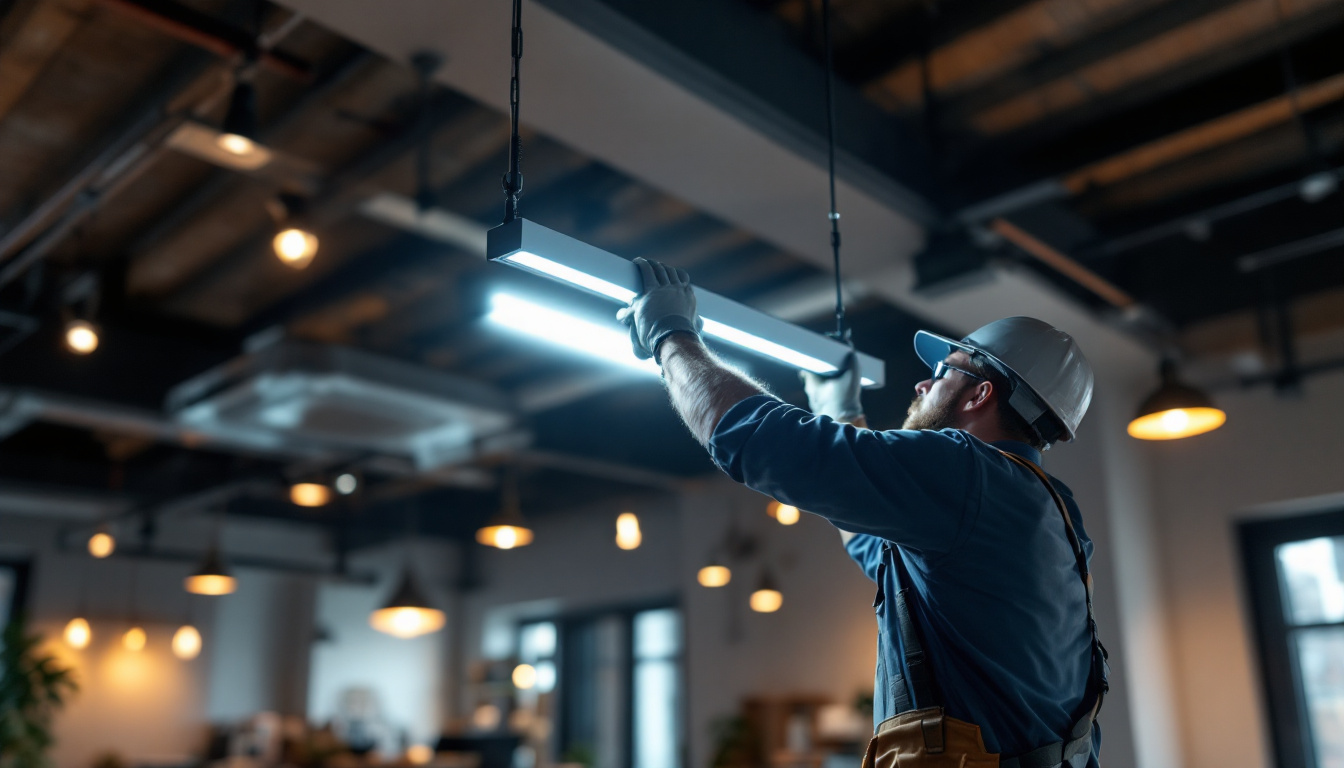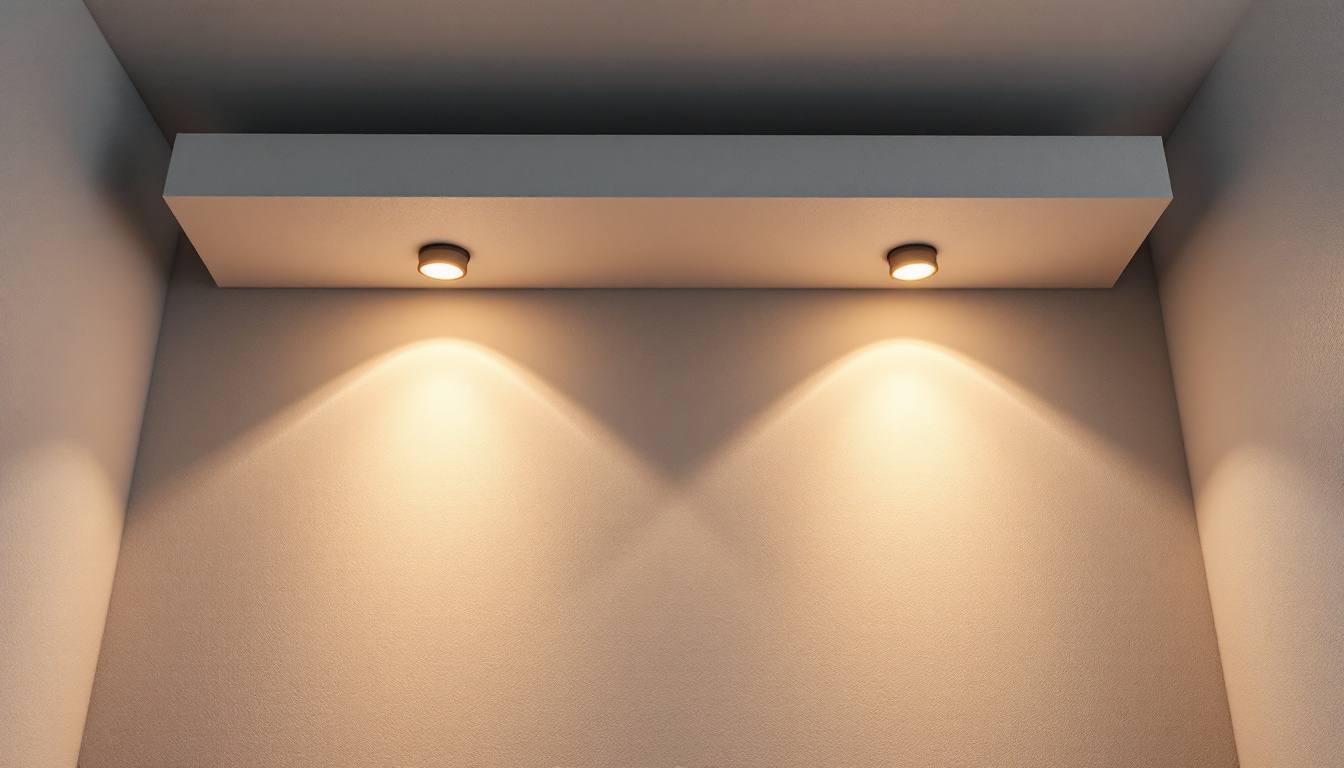
In the ever-evolving world of lighting technology, the 4ft LED fixture has emerged as a staple for both commercial and residential applications. For lighting contractors, understanding the nuances of these fixtures is essential for making informed decisions that can enhance both client satisfaction and project efficiency. This article delves into the critical aspects of 4ft LED fixtures, offering insights that can help contractors navigate their selection and installation.
The 4ft LED fixture is designed to replace traditional fluorescent tubes, providing a more energy-efficient and longer-lasting lighting solution. These fixtures are commonly used in various settings, including offices, warehouses, and retail spaces. Their versatility and efficiency make them a popular choice among contractors.
One of the standout features of 4ft LED fixtures is their energy efficiency. Compared to traditional lighting solutions, LED fixtures consume significantly less power, which translates to lower electricity bills for clients. This reduction in energy consumption is not only cost-effective but also contributes to a smaller carbon footprint, aligning with sustainability goals.
Additionally, 4ft LED fixtures boast a longer lifespan, often lasting up to 50,000 hours or more. This longevity means less frequent replacements, reducing maintenance costs and downtime for businesses. For contractors, this translates to fewer service calls and a more satisfied clientele.
4ft LED fixtures are incredibly versatile and can be used in a variety of applications. In commercial settings, they are ideal for illuminating large spaces such as warehouses and manufacturing facilities. Their bright, even light distribution enhances visibility, which is crucial for safety and productivity.
In office environments, these fixtures can create a more inviting atmosphere while also improving energy efficiency. The ability to choose from different color temperatures allows contractors to tailor the lighting to fit the specific needs of each space, whether it’s a warm light for relaxation or a cooler tone for focus.
Furthermore, 4ft LED fixtures are increasingly being integrated into smart lighting systems, allowing for enhanced control over the lighting environment. With features like dimming capabilities and motion sensors, these fixtures can adapt to the occupancy of a space, further optimizing energy use. This smart technology not only provides convenience but also adds a layer of security, as lights can be programmed to turn on and off at specific times or in response to movement, deterring potential intruders in commercial properties.
Moreover, the sleek design of 4ft LED fixtures complements modern architectural aesthetics, making them a preferred choice for retail spaces aiming to create a welcoming ambiance. Retailers can use these fixtures to highlight products effectively, drawing customers’ attention while maintaining an energy-efficient lighting solution. The ability to mix and match fixture styles—like surface-mounted, pendant, or recessed options—allows for creative and functional lighting designs that enhance the overall shopping experience.
When selecting 4ft LED fixtures, contractors must consider several key features that can impact both performance and client satisfaction. Understanding these features will enable contractors to make informed choices that align with their project requirements.
Light output, measured in lumens, is a critical factor when choosing LED fixtures. Contractors should assess the lumen output to ensure it meets the lighting needs of the space. Higher lumens are generally better for larger areas or spaces requiring bright lighting, while lower outputs may suffice for smaller or more intimate settings.
Moreover, the efficiency of the fixture, often expressed as lumens per watt (lm/W), is essential for determining energy savings. A higher lm/W ratio indicates a more efficient fixture, which is beneficial for both the contractor and the client in terms of operational costs. In addition to energy savings, efficient lighting contributes to a reduced carbon footprint, aligning with sustainability goals that many clients prioritize today. This aspect can also be a selling point for contractors looking to appeal to environmentally conscious consumers.
The color temperature of LED fixtures, measured in Kelvin (K), influences the ambiance of a space. Warm white light (around 3000K) creates a cozy atmosphere, while cool white light (around 4000K) promotes alertness and productivity. Understanding the desired ambiance of a space can guide contractors in selecting the appropriate color temperature for their clients.
Additionally, the Color Rendering Index (CRI) measures how accurately a light source displays colors compared to natural light. A higher CRI (above 80) is preferable for spaces where color accuracy is important, such as retail environments or art galleries. Contractors should consider these factors to ensure the lighting meets the aesthetic and functional needs of the project. Furthermore, the ability to adjust color temperature and CRI through tunable white technology is becoming increasingly popular, allowing for flexibility in lighting design. This feature can enhance the versatility of a space, enabling it to adapt to various activities and moods throughout the day, which is especially beneficial in multi-use environments like community centers or educational facilities.
Proper installation of 4ft LED fixtures is crucial for achieving optimal performance and longevity. Contractors must be aware of various installation factors to ensure a successful outcome.
4ft LED fixtures offer various mounting options, including surface mount, recessed mount, and pendant mount. The choice of mounting will depend on the specific application and the design preferences of the client. Surface-mounted fixtures are ideal for areas with low ceilings, while recessed fixtures provide a sleek, modern look.
Contractors should also consider the layout of the space when deciding on mounting options. Proper spacing between fixtures can enhance light distribution and minimize shadows, creating a more pleasant environment.
Electrical compatibility is another critical aspect of installation. Contractors must ensure that the existing wiring can support the new fixtures. This may involve upgrading circuits or making adjustments to accommodate the LED technology. Understanding the electrical requirements of the fixtures will help prevent issues during installation.
Additionally, it’s essential to follow local building codes and regulations when installing LED fixtures. This not only ensures safety but also protects the contractor from potential liabilities.
While the initial cost of 4ft LED fixtures may be higher than traditional lighting options, the long-term savings often outweigh the upfront investment. Contractors should educate their clients about the total cost of ownership, which includes energy savings, reduced maintenance, and longer lifespans.
Calculating the return on investment for LED fixtures can help clients understand the value of their purchase. By comparing the energy costs of traditional fixtures to those of LED lighting, contractors can provide clients with a clear picture of potential savings over time. This information can be particularly persuasive for clients considering a switch to LED technology.
Furthermore, many utility companies offer rebates or incentives for upgrading to energy-efficient lighting solutions. Contractors should stay informed about available programs in their area, as this can enhance the overall value proposition for clients.
Although 4ft LED fixtures require less maintenance than traditional lighting options, contractors should still emphasize the importance of regular checks and upkeep. Providing clients with a maintenance schedule can help ensure that the fixtures continue to perform optimally throughout their lifespan.
Contractors should be prepared to address common issues that may arise with LED fixtures. Flickering lights, for instance, can be a sign of compatibility issues with dimmers or faulty wiring. Understanding how to troubleshoot these problems will enhance the contractor’s reputation and build trust with clients.
Additionally, educating clients on proper usage and care can prevent many common issues. For example, advising clients to avoid overloading circuits can help maintain the integrity of the lighting system.
The lighting industry is continually evolving, and staying ahead of trends is crucial for contractors. Emerging technologies and innovations in LED fixtures can provide new opportunities for contractors to enhance their offerings.
smart lighting technology is gaining traction, allowing users to control their lighting systems through mobile apps or voice-activated devices. These solutions offer convenience and energy savings, appealing to tech-savvy clients. Contractors should familiarize themselves with smart lighting options and consider incorporating them into their projects.
Additionally, integrating smart lighting with building management systems can enhance energy efficiency and provide valuable data for facility management. This trend is likely to grow, making it essential for contractors to stay informed about the latest advancements.
As LED technology continues to advance, so do the design options available to contractors. Sleeker, more aesthetically pleasing fixtures are becoming increasingly popular, allowing contractors to offer clients a broader range of choices. Understanding design trends can help contractors provide tailored solutions that meet the unique needs of each client.
Moreover, customizable LED fixtures that allow for color changing and dynamic lighting effects are becoming more accessible. These options can enhance the ambiance of a space and provide added value to clients.
In conclusion, the 4ft LED fixture represents a significant advancement in lighting technology, offering numerous benefits for both contractors and clients. By understanding the key features, installation considerations, and future trends, lighting contractors can position themselves as knowledgeable professionals in the field.
As the demand for energy-efficient and aesthetically pleasing lighting solutions continues to rise, contractors who stay informed and adapt to these changes will be better equipped to meet the needs of their clients. Embracing the potential of 4ft LED fixtures not only enhances project outcomes but also contributes to a sustainable future in lighting.
Ready to elevate your lighting projects with the efficiency and style of 4ft LED fixtures? Look no further than LumenWholesale for all your lighting needs. We provide contractors with high-quality, specification-grade lighting products at unbeatable wholesale prices. By eliminating the middleman, we offer superior lighting solutions without the inflated markups, ensuring you get the best value for your investment. Our extensive selection not only meets but exceeds industry standards, guaranteeing reliable and high-performance lighting for every project. Plus, with free shipping on bulk orders, you can stock up on premium lighting without worrying about hidden fees or compromises. Don’t miss out on the perfect combination of quality, affordability, and convenience. Visit LumenWholesale today and experience the best in wholesale lighting at the best value.

Discover everything about park lamps in just 5 minutes—learn key benefits, installation tips, and industry insights for lighting contractors.

Discover the essential checklist for lighting contractors working with outside power boxes.

Discover expert tips for lighting contractors on installing LED under-counter kitchen lights without a hitch.

Discover expert insights into the world of recessed lighting with our comprehensive guide tailored for lighting contractors.